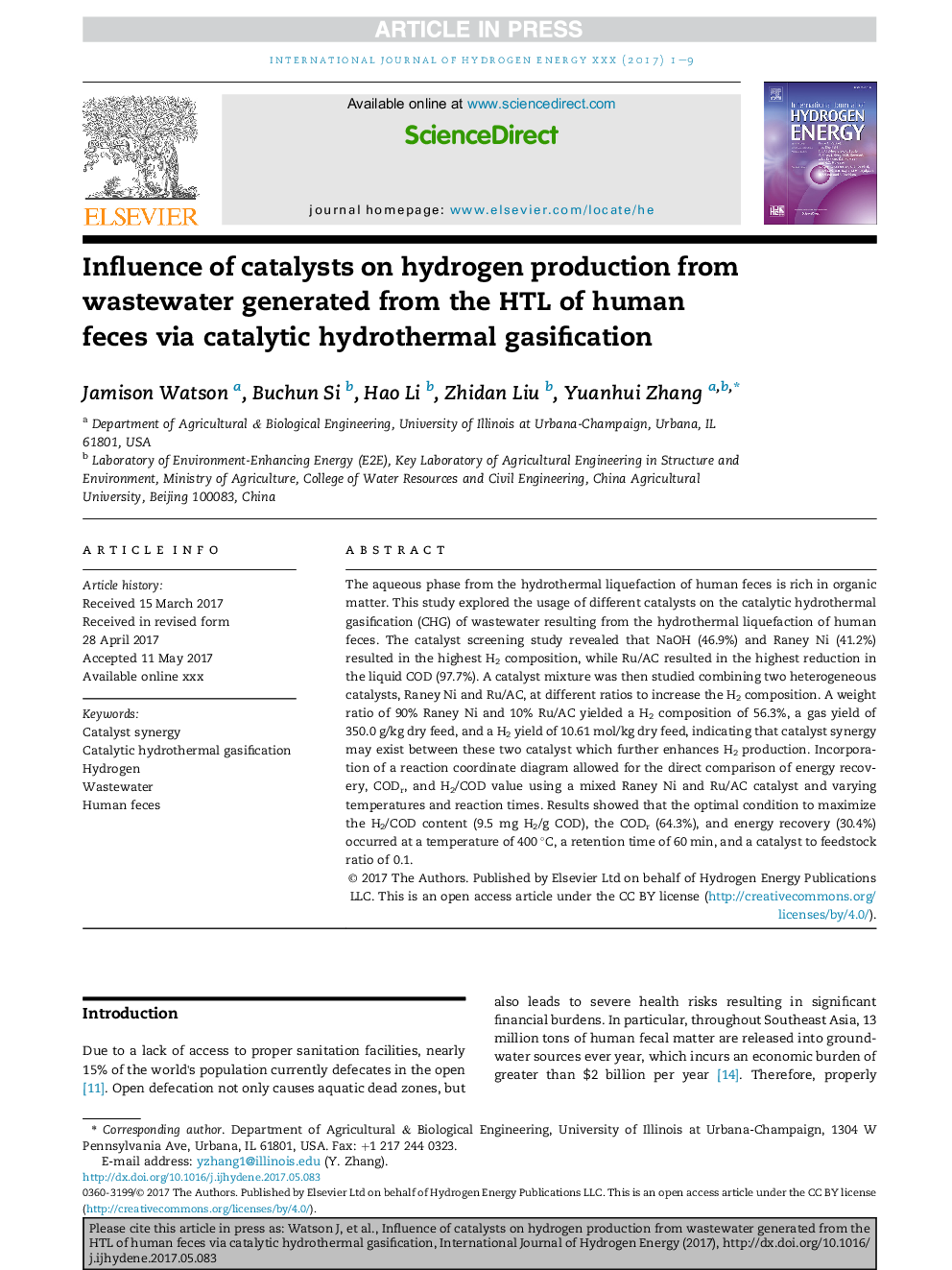| Article ID | Journal | Published Year | Pages | File Type |
|---|---|---|---|---|
| 5146261 | International Journal of Hydrogen Energy | 2017 | 9 Pages |
Abstract
The aqueous phase from the hydrothermal liquefaction of human feces is rich in organic matter. This study explored the usage of different catalysts on the catalytic hydrothermal gasification (CHG) of wastewater resulting from the hydrothermal liquefaction of human feces. The catalyst screening study revealed that NaOH (46.9%) and Raney Ni (41.2%) resulted in the highest H2 composition, while Ru/AC resulted in the highest reduction in the liquid COD (97.7%). A catalyst mixture was then studied combining two heterogeneous catalysts, Raney Ni and Ru/AC, at different ratios to increase the H2 composition. A weight ratio of 90% Raney Ni and 10% Ru/AC yielded a H2 composition of 56.3%, a gas yield of 350.0 g/kg dry feed, and a H2 yield of 10.61 mol/kg dry feed, indicating that catalyst synergy may exist between these two catalyst which further enhances H2 production. Incorporation of a reaction coordinate diagram allowed for the direct comparison of energy recovery, CODr, and H2/COD value using a mixed Raney Ni and Ru/AC catalyst and varying temperatures and reaction times. Results showed that the optimal condition to maximize the H2/COD content (9.5 mg H2/g COD), the CODr (64.3%), and energy recovery (30.4%) occurred at a temperature of 400 °C, a retention time of 60 min, and a catalyst to feedstock ratio of 0.1.
Related Topics
Physical Sciences and Engineering
Chemistry
Electrochemistry
Authors
Jamison Watson, Buchun Si, Hao Li, Zhidan Liu, Yuanhui Zhang,
